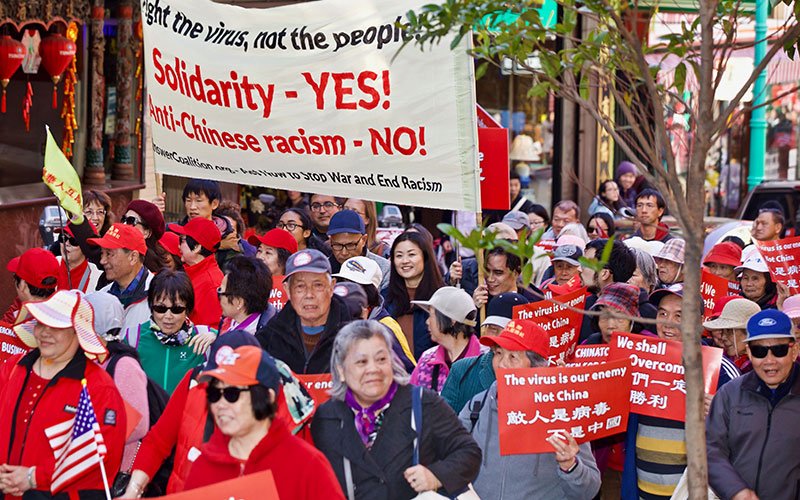Although discrimination against Asian Americans has been prevalent in the U.S. for years, prejudiced opinions regarding COVID-19 have caused hate crimes and verbal attacks to intensify in Asian communities.
In a Stop AAPI Hate report, 832 hate crimes against Asian Americans have taken place in California because of the pandemic, with many more occurring since this report’s release on June 30, 2020. Stop AAPI Hate is a reporting center made up of three different organizations; Asian Pacific Planning and Policy Council (A3PCON), San Francisco State University’s Asian American Studies Department, and Chinese for Affirmative Action (CAA). The creation of this center by these three organizations was made official on March 19, 2020, to combat and respond to anti-Asian hate, violence, discrimination, and more.
A youth intern from Stop AAPI Hate, Amanda Young, a senior at Campolindo High School, shared some of her experiences working with the organization and their actions.
“Last summer, we collected stories about [anti-Asian discrimination] experiences and compiled the information into a policy report,” Young said. “[We] came up with some policy recommendations like implementing ethnic studies and online bullying resources and things like that.”
Organizations throughout the country worked with these issues before the pandemic but have become more vocal since. Especially in the Bay Area, local groups continue to keep reports on hate crimes and how people have been affected throughout the community. A 91-year-old man fell victim to a recent attack in Oakland’s Chinatown, where a suspect pushed him to the ground. The frequency of these attacks is due to others blaming the virus on Asian citizens.
Young explained her take on the psychology behind Asian Americans receiving most of the pandemic’s direct hate.
“There are a lot of people who have lost loved ones, and because of that, it’s easy to look for a scapegoat,” Young said. “The virus originated in China, and it’s a convenient outlet for people. It’s been fueled by Trump, and other politicians, who consistently call it the Chinese virus and the Kung Flu. Just making that association has been really hurtful.”
Labels such as “Kung Flu” or “Chinese Virus” are not the only comments that continue to exemplify racist ideas. Purposeful or not, thousands of subtle racist comments fly under the radar without ever being called out.
One experience, endured by sophomore Kaitlyn White of Visalia Unified School District, demonstrates one of the many assumptions made about those who are Asian.
“I was in the cereal aisle, and a woman came up to me, and they were not speaking Tagalog; I would have understood that,” White said. “They were speaking some foreign language I honestly don’t know. And I was like, “Excuse me, ma’am?” and then she said, “Oh great, you speak English. Do you happen to know where the bathroom is?”
Alongside both White’s and Young’s experiences during this COVID-19 outbreak, many others still combat the same xenophobic and bigotry treatments. With the pandemic’s first anniversary already passing, plenty of hate crimes and acts of violence continue at high rates. Advocating and supplying more resources can spread awareness for the Asian community.
The first step to that awareness is noticing what is and is not racist. Whether it is a stereotype, comment, or anything in between, people can start to step back and think about the impact of their actions. Young summarized one specific harmful stereotype, which was that Asians are the “model minority,” meaning people believe they are no longer subject to racism and have risen above their hardships.
“I think that that’s really harmful because it downplays the racism and is also neglectful of the Asian American community,” Young said. “There are all these problems with people; maybe they think they aren’t racist, or they [Asian Americans], are told to take a joke.”
























